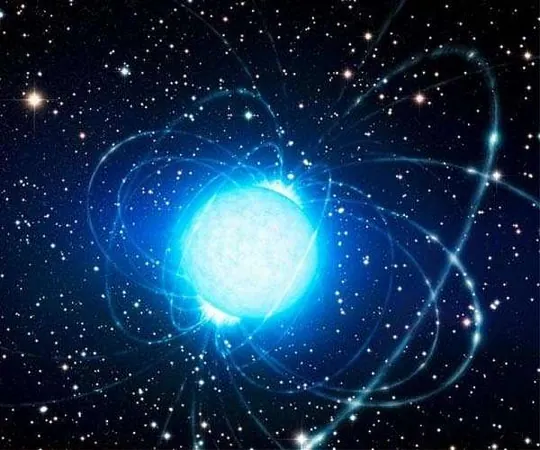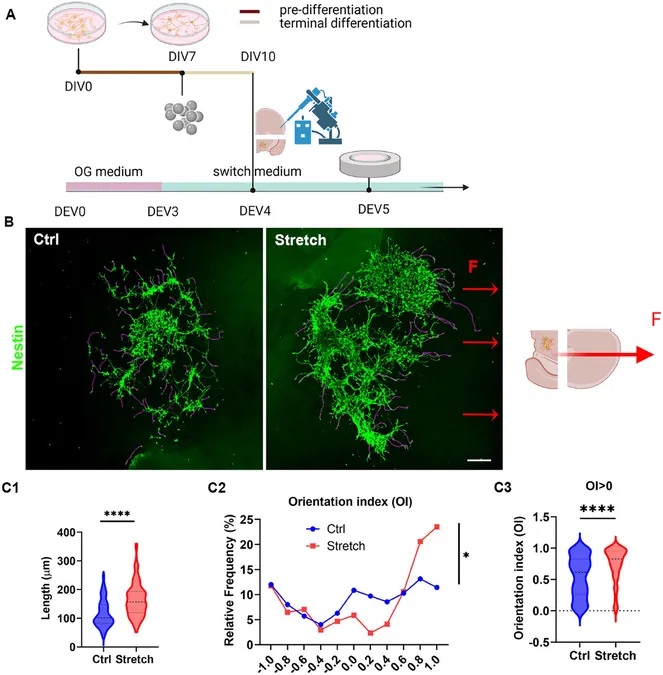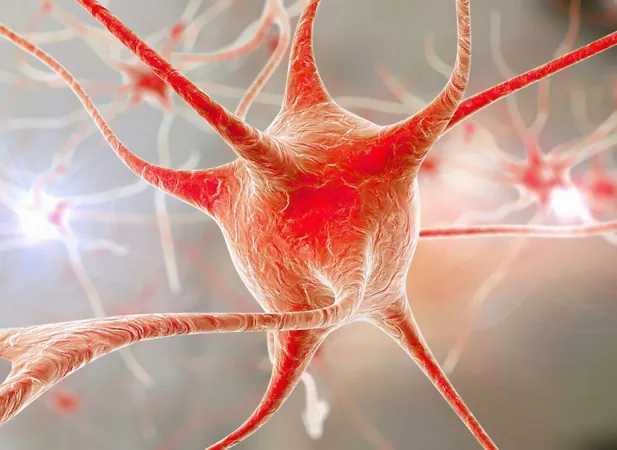
Breakthrough Discovery: Scientists Confirm Neutron Stars as Key Sources of Fast Radio Bursts
2025-01-03
Author: Benjamin
Astronomical Breakthrough
In an astonishing revelation that sheds light on one of astronomy's greatest mysteries, an international team of researchers led by scientists from McGill University has established a compelling link between fast radio bursts (FRBs) and neutron stars. These celestial bodies, the remnants of massive stars that have exploded in spectacular supernova events, have been the subject of astronomical curiosity since the first discovery of an FRB in 2007.
“This groundbreaking discovery reaffirms our long-held suspicions about the connection between FRBs and neutron stars,” commented Ryan Mckinven, a doctoral researcher in McGill's Department of Physics and the study’s lead author. Published in the prestigious journal *Nature*, this research challenges existing theoretical models, suggesting that the radio emissions actually occur much closer to the neutron stars than previously understood.
Understanding Fast Radio Bursts
Fast radio bursts are among the brightest cosmic phenomena, releasing an incredible amount of energy in just milliseconds – a single FRB can produce as much energy as the sun emits in an entire day! Despite the thousands of FRBs recorded, pinpointing their exact origins has proven elusive. Using the innovative Canadian Hydrogen Intensity Mapping Experiment (CHIME) radio telescope, Mckinven’s team identified striking similarities between the behavior of FRBs and pulsars, which are well-known, radio-emitting neutron stars.
Research Insights
The research focused on a specific FRB’s polarization – a characteristic that describes the direction of radio wave oscillation. Over a mere 2.5 milliseconds, the polarization angle varied dramatically, showcasing features usually associated with pulsars but rarely seen in FRBs. While the researchers initially considered the possibility that the burst was a misclassified pulsar within our Milky Way, subsequent observations confirmed its origin was a distant galaxy, millions of light-years away.
“Polarimetry is one of the few tools at our disposal to probe these distant cosmic sources,” Mckinven explained. “Our findings are poised to inspire further studies into the behavior of other FRBs, prompting theoretical explorations to harmonize the differences observed in their polarized signals.”
The Role of the CHIME Telescope
The CHIME telescope, stationed in Penticton, British Columbia, is essential to this research, detecting thousands of FRBs each day and allowing scientists to identify rare signals like the one in this study.
“This breakthrough is a monumental step toward unraveling a profound cosmic enigma,” Mckinven stated. “Although FRBs are widespread, their true nature remains largely a puzzle. Each discovery we make about their origins deepens our understanding of the universe's dynamic fabric.”
Supporting Research
Supporting this research, Kenzie Nimmo from the Massachusetts Institute of Technology contributed complementary findings that bolster the neutron star explanation. Nimmo’s study revealed a phenomenon akin to 'twinkling' – a scintillation pattern similar to how stars appear to glow in the night sky. “The observation of this scintillation implies that the region from which the FRB emerged must be incredibly small,” Nimmo shared. They estimated the emission site to be less than 10,000 kilometers wide, despite the FRB originating over 200 million light-years away.
Implications and Future Research
This precision underscores that the FRB emanated from the intensely magnetic and extreme environment surrounding a neutron star. Aaron Pearlman, a Banting Prize Postdoctoral Fellow at McGill's Department of Physics and the Trottier Space Institute, emphasized the implications of the research: “The scintillation patterns and polarization swings observed in this FRB are consistent with what we would expect from a supergiant radio pulse emitted near a rapidly rotating, highly magnetized neutron star. This research lends additional weight to the theory that some FRBs may indeed originate from such stellar phenomena.”
This vital research not only deepens our understanding of neutron stars and fast radio bursts but also paves the way for future explorations, possibly transforming our perception of the universe. The quest to decode the cosmic language of FRBs is just beginning, and the implications of these findings may trigger a new era in astrophysics!









 Brasil (PT)
Brasil (PT)
 Canada (EN)
Canada (EN)
 Chile (ES)
Chile (ES)
 Česko (CS)
Česko (CS)
 대한민국 (KO)
대한민국 (KO)
 España (ES)
España (ES)
 France (FR)
France (FR)
 Hong Kong (EN)
Hong Kong (EN)
 Italia (IT)
Italia (IT)
 日本 (JA)
日本 (JA)
 Magyarország (HU)
Magyarország (HU)
 Norge (NO)
Norge (NO)
 Polska (PL)
Polska (PL)
 Schweiz (DE)
Schweiz (DE)
 Singapore (EN)
Singapore (EN)
 Sverige (SV)
Sverige (SV)
 Suomi (FI)
Suomi (FI)
 Türkiye (TR)
Türkiye (TR)
 الإمارات العربية المتحدة (AR)
الإمارات العربية المتحدة (AR)